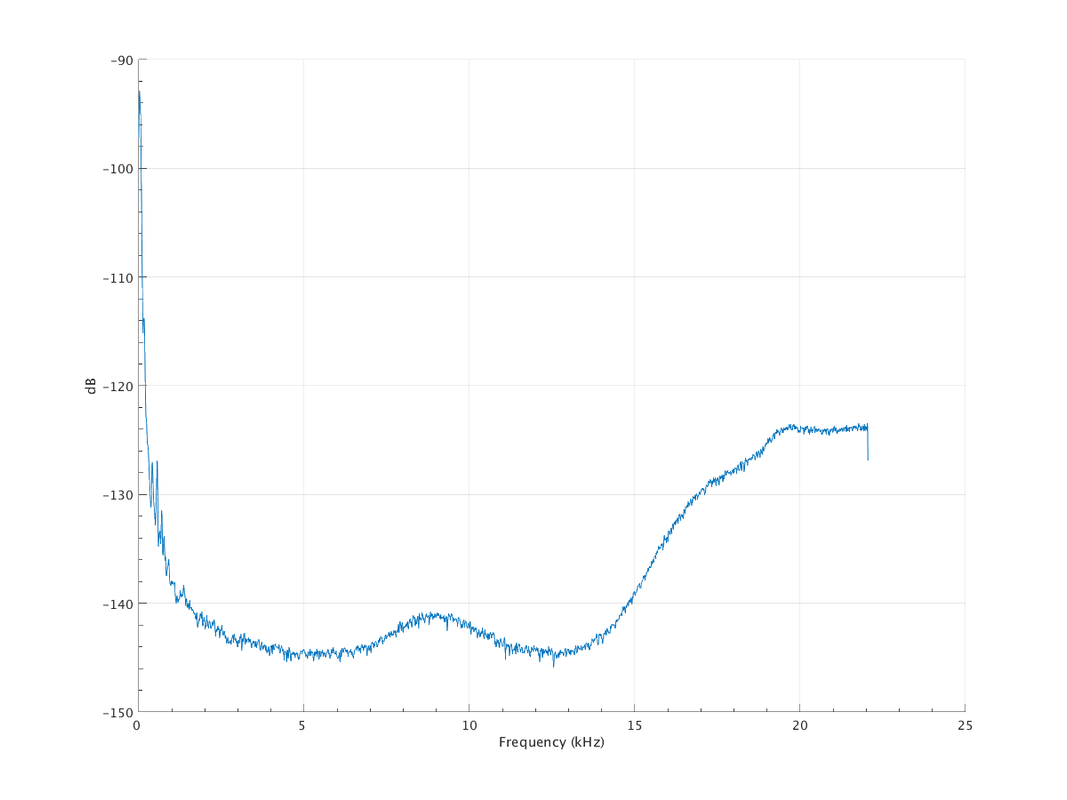mansr
Objectionist
One obvious target is the shaped dither that is always present in MQA files. The graph below was made by computing a series of short (2048 points) FFTs over an MQA file, computing a 100-point moving average of these, and finally taking the minimum of those.The concern wrt material that has been though MQA and then subsequently altered, losing its official 'flagging' is that the effects of MQA will vary from case to case. So any detector that relies on detecting the 'usual signs' can't be 100% reliable. What I'm not yet sure about is how reliable it can be, and what the best tack may be. The obvious targets are:
1) The anharmonics adde by MQA passage.
2) The 'hole' effect around the folded Nyquist.
Thus far my feeling is that (1) could be detected by doing FFTs, and comparing them with their 'frequency flipped' results, correlating against an offset. That may make finding patterns of offset anharmonics easier as it can maximise the SNR of the search. May also be useful to differentiate the sample series first to 'pre whiten' a bit. But I'd need to play with this, so takes time. Hence if anyone else also wants to have a go, I'd be happy to be beaten to it!

This noise shape is a tell-tale sign of MQA and easily identified visually. Now to automate it...

